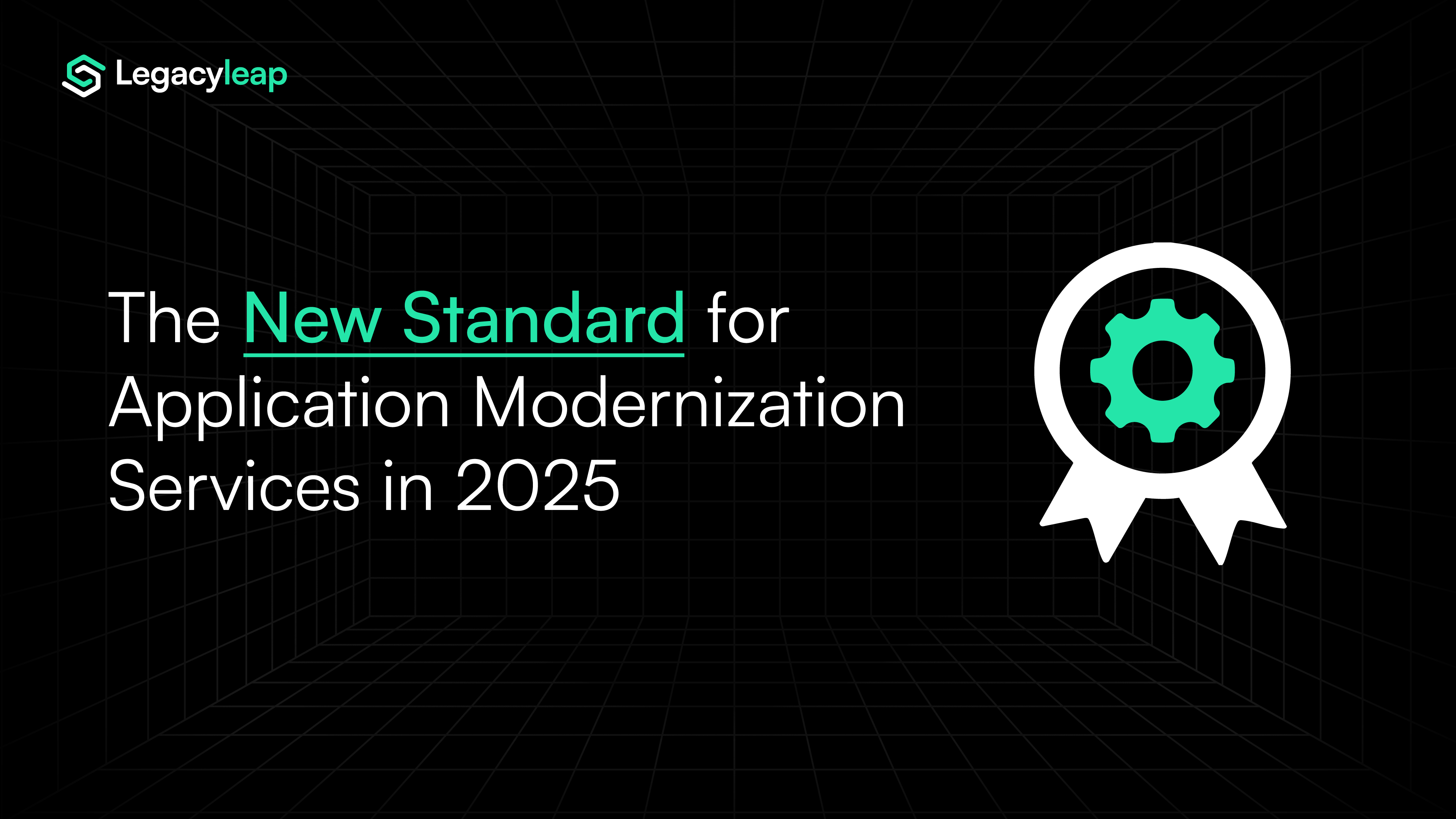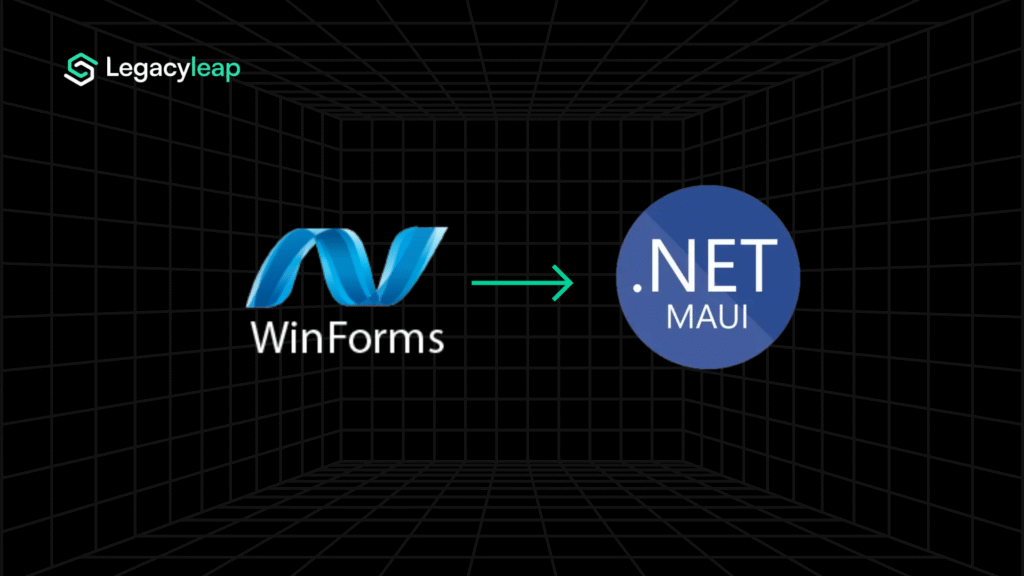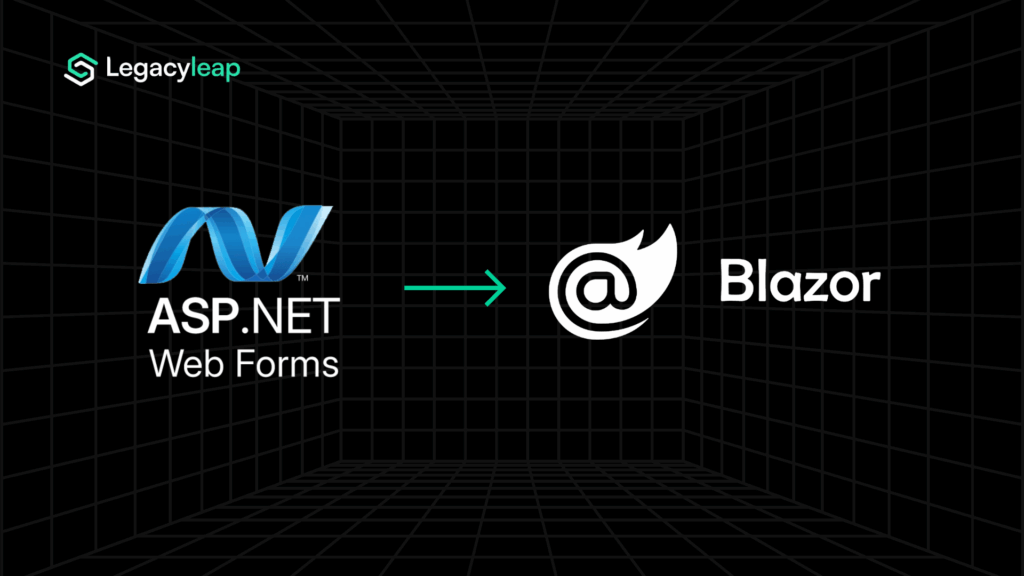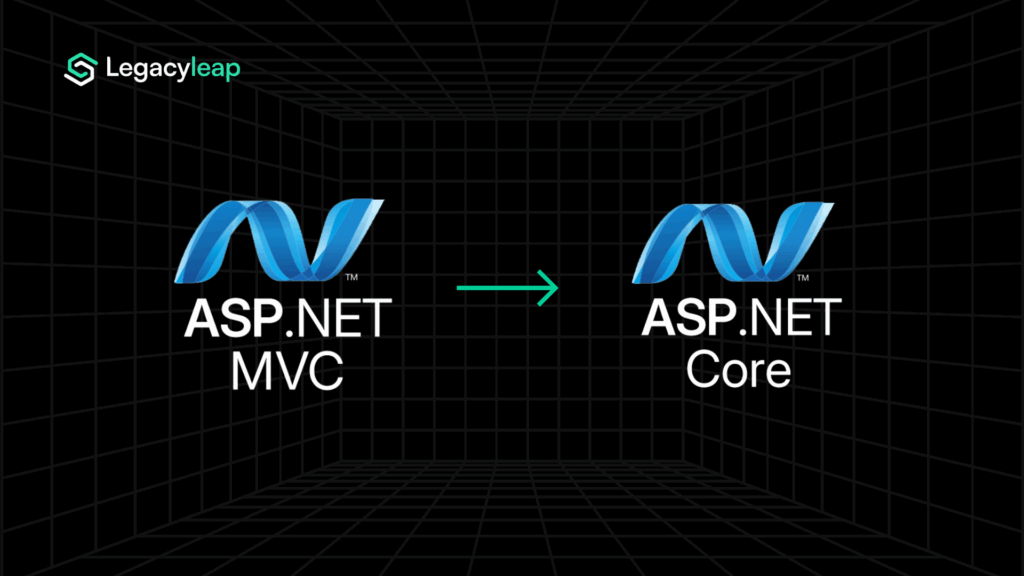The demand for application modernization services is skyrocketing, with the market expected to reach $60.87 billion by 2032, growing at a CAGR of 15.48%. As businesses scale, legacy systems often become bottlenecks—slowing down innovation, scalability, and competitive growth.
Modernization is no longer about simple “lift-and-shift” migrations. In the past, businesses relied on manual code rewrites, database migrations, and infrastructure rehosting, often slow, costly, and prone to failure. Even with automation tools, significant human intervention was still required.
Now, Generative AI (Gen AI) is fundamentally changing modernization. From understanding legacy code to transforming it into future-ready, cloud-native applications, Gen AI enables end-to-end modernization with unmatched speed and efficiency.
This shift is pivotal. Companies still relying on fragmented, manual processes face longer timelines, higher costs, and operational risks. On the other hand, businesses embracing AI-powered modernization solutions are achieving faster, more accurate transformations, positioning themselves miles ahead in 2025 and beyond.
In this article, we’ll explore how application modernization solutions have evolved, where they stand today, and why purpose-built AI-powered solutions are now setting a new benchmark for modernization.
The evolution of application modernization solutions & services
Application modernization has gone through a significant transformation over the past decade. What once started as a slow, manual exercise has now evolved into highly automated, AI-powered modernization.
However, understanding this evolution is crucial to recognizing why modern approaches – particularly those driven by Gen AI – are fundamentally different from their predecessors.
Over the years, modernization solutions have shifted from fully manual processes to AI-augmented methods, each stage addressing different pain points. The journey can largely be divided into four key phases, starting with the era of manual modernization.
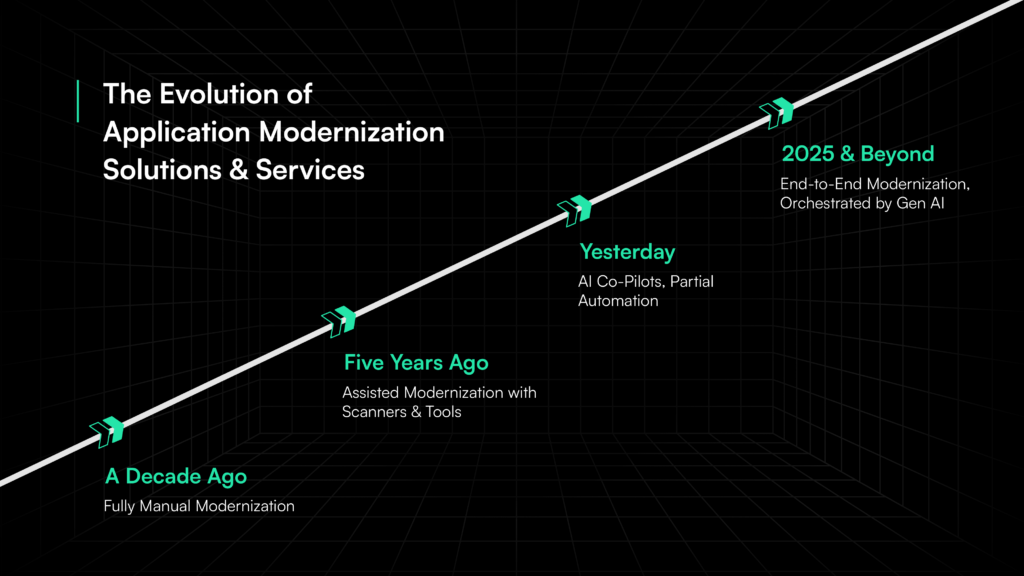
1. A decade ago: Fully manual modernization
A decade ago, modernizing legacy systems was almost entirely manual. Businesses looking to move from outdated platforms to modern technologies faced a time-consuming, resource-intensive process that was heavily dependent on human effort.
The approach was straightforward—developers would manually rewrite code, rework database structures, and migrate applications from legacy environments to modern stacks. However, this method came with significant challenges:
- Extremely long timelines: Even moderately complex applications could take years to modernize.
- High risk of errors: Manual code rewrites increased the probability of bugs, logic failures, or overlooked business rules.
- Poor ROI: With high labor costs, long execution periods, and unpredictable outcomes, modernization rarely yielded strong returns.
- Project failures: Many modernization efforts were abandoned midway due to cost overruns, misaligned business goals, or unforeseen technical challenges.
The biggest limitation of fully manual modernization was its lack of scalability. Every project required a fresh start, making it impossible to modernize large enterprise applications at speed. This approach also failed to capture business logic accurately, resulting in significant functional gaps post-migration.
While manual modernization laid the groundwork, it was clear that a new, more efficient approach was needed, leading to the introduction of assisted modernization tools. We’ll explore that next.
2. Five years ago: Assisted modernization with scanners & tools
Around five years ago, application modernization services took a step forward with the introduction of code analyzers, migration tools, and early automation technologies. This shift aimed to reduce the manual burden by introducing tools that could partially automate code migration, tech debt assessment, and dependency mapping.
The promise was clear—businesses could now accelerate their modernization efforts by using assisted modernization solutions that provided insights into their legacy codebases. Tools like static code analyzers could identify dependencies, detect code complexity, and assess technical debt, giving enterprises a clearer picture of their modernization scope.
However, despite these advancements, the core execution still remained largely manual. While these tools could analyze and report on legacy systems, they couldn’t transform them. Developers were still responsible for manually rewriting code, restructuring architectures, and ensuring functional parity in the modernized application. This created a bottleneck in the modernization process:
- Limited automation: Tools could flag problem areas but couldn’t resolve them, leaving the heavy lifting to human effort.
- Inconsistent results: Without full automation, outcomes varied depending on developer expertise, increasing the risk of errors.
- Extended timelines: Though code analysis tools accelerated assessment, actual modernization timelines were still long due to manual execution.
- Partial ROI: While assisted modernization reduced some initial costs, the overall return on investment was still limited by manual labor and slower turnaround times.
The introduction of these tools was a step in the right direction, but it quickly became evident that modernization solutions needed more than just assessment capabilities—they needed execution power.
This realization paved the way for the next evolution: AI-powered modernization, where automation would extend beyond assessment into complete transformation.
3. Yesterday: Co-pilots & AI-augmented modernization
The past few years have seen a significant leap in application modernization solutions with the introduction of AI-powered modernization tools.
Large Language Models (LLMs), intelligent code refactoring, and predictive analytics have transformed how businesses approach modernization. Instead of relying solely on human effort, enterprises could now accelerate their modernization journey through AI-assisted capabilities.
This era introduced co-pilot models, AI tools capable of understanding legacy code, generating test cases, and performing code refactoring. Companies leveraging these AI-driven solutions began to see measurable improvements in time-to-modernize, cost reduction, and code quality.
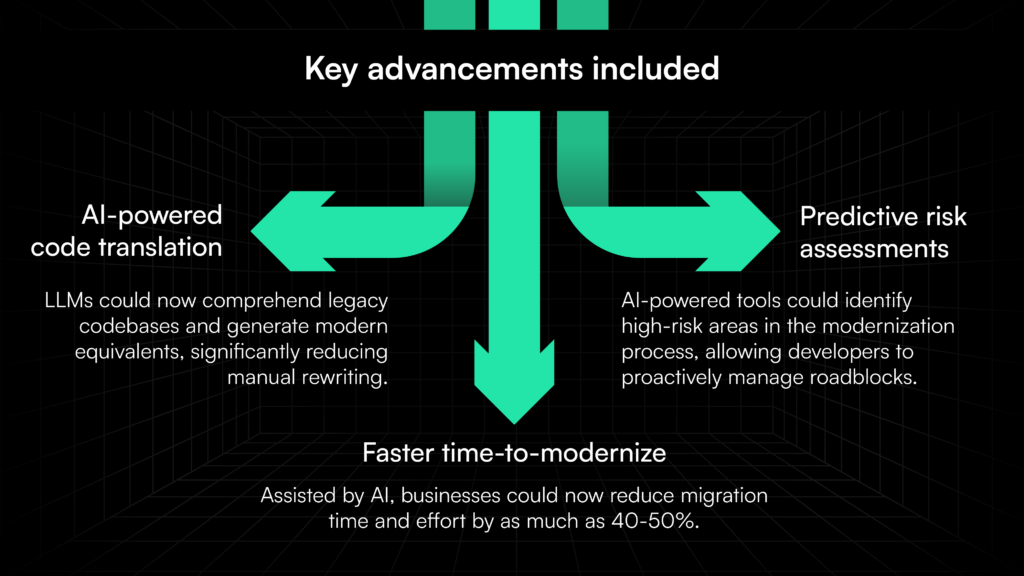
However, despite these breakthroughs, a major limitation remained: AI augmentation was still fragmented.
While co-pilots excelled at individual tasks like code comprehension, generating test cases, or refactoring, they fell short of delivering end-to-end modernization. The burden of stitching together AI-generated outputs into a cohesive modernization effort still fell on developers.
This meant:
- Scattered automation: AI tools could assist but not orchestrate. Developers still had to integrate refactored code manually, validate business logic, and deploy applications.
- High human dependence: AI could accelerate tasks, but modernization projects still relied heavily on manual effort to connect the dots.
- Limited ROI: Although AI-driven solutions reduced time and cost, the fragmented nature of automation limited the overall business impact.
In essence, co-pilots offered speed but not completeness. The modernization process still lacked a unified, end-to-end solution that could handle everything without heavy manual intervention.
This gap laid the groundwork for the next evolution in application modernization services and where we are today: full-stack, AI-powered modernization.
4. 2025 & beyond: Comprehensive AI-powered modernization solutions
As we move into 2025, application modernization services reach a pivotal inflection point. What started as manual code rewrites and evolved into AI-assisted co-pilots is now transforming into full-stack, AI-powered modernization, where AI orchestrates the entire modernization journey.
The difference lies in completeness. Until now, most modernization approaches have relied on fragmented AI capabilities like using AI for code generation, test case creation, or dependency analysis but have left the orchestration of these tasks to human developers. This scattered automation created inconsistencies and delays in modernization projects.
But in 2025, the conversation is shifting toward comprehensive, end-to-end modernization. The new standard is clear:
- AI-first code transformation: Instead of just assisting, AI is now capable of deeply understanding legacy code, extracting business logic, and transforming it into modern cloud-native architectures.
- Automated test case generation and validation: AI now handles test creation, functional validation, and quality checks—drastically reducing the risk of post-modernization defects.
- Predictive risk management: Advanced AI models can proactively identify high-risk modules in legacy code, allowing teams to resolve potential failures before they surface.
- Seamless cloud optimization: AI can now optimize the application’s architecture for cloud environments, ensuring scalability, security, and performance from day one.
Minimal human intervention: End-to-end automation minimizes reliance on human effort, enabling modernization projects to be completed in a fraction of the time.
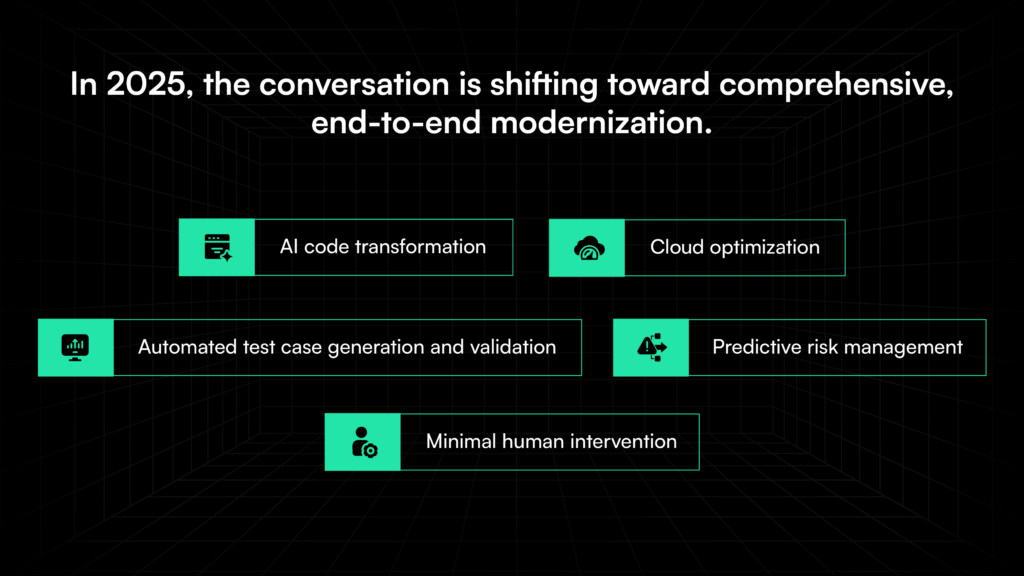
This shift toward full-stack AI-powered modernization means businesses will no longer approach modernization as a fragmented, task-driven exercise. Instead, they will expect one continuous, AI-orchestrated transformation without disruption or heavy manual intervention.
However, this new standard comes with its own challenge: not every modernization solution is built to orchestrate end-to-end transformation.
While most service providers still offer AI-assisted modernization, only a few have managed to build truly AI-first modernization platforms that cover the entire spectrum—comprehension, transformation, validation, and deployment—without heavy developer involvement.
And that’s exactly where the future of modernization lies: solutions that don’t just assist but execute, optimize, and deploy to eliminate manual bottlenecks and accelerate time-to-modernize.
Not convinced that AI is the next stage for successful modernization initiatives? Here’s a read for you: How AI is Transforming the Application Modernization Approach, Roadmap & Process in 2025.
What defines a cutting-edge application modernization service in 2025?
As application modernization services continue to evolve, businesses are shifting their expectations. In 2025, simply migrating code or upgrading frameworks won’t be enough. The real differentiator will be end-to-end modernization platforms capable of orchestrating the entire transformation with minimal human intervention.
This is where the new standard emerges:
1. AI-first code comprehension & refactoring
Modernization starts with understanding legacy code—not just converting it. Leading platforms now use AI models that can:
- Comprehend complex legacy codebases and extract business logic.
- Automatically document architecture, dependencies, and potential risks.
- Refactor code into modern, cloud-native frameworks with minimal manual effort.
Without deep code comprehension, modernization projects remain fragmented, slow, and error-prone.
2. Intelligent risk mitigation through automated testing
One of the most pressing challenges in modernization is avoiding disruption. Any code transformation—whether it’s rewriting, refactoring, or migrating—carries the risk of functionality breakage.
The best modernization platforms minimize this risk by:
- Auto-generating test cases to validate functionality during and after transformation.
- Leveraging behavior-driven testing (BDD) to ensure business logic remains intact.
- Using predictive analytics to identify and preempt high-risk failure points.
With built-in quality checks, businesses can modernize without fear of operational breakdowns.
3. Cloud-native & modular modernization
The goal of modernization isn’t simply to update applications. It’s to future-proof them. This requires breaking down monolithic applications into:
- Microservices-based architectures for scalability.
- Cloud-native frameworks for optimal performance and cost-efficiency.
- Database modernization to reduce legacy infrastructure dependency.
A cutting-edge modernization service rearchitects applications for long-term scalability and agility.
4. End-to-end automation without disruption
The most defining feature of next-generation modernization services is full-stack automation. Instead of using AI for isolated tasks (like code translation or test generation), modern platforms must:
- Orchestrate the entire process from assessment to deployment.
- Minimize human dependency for faster time-to-modernize.
- Integrate seamlessly into existing workflows without causing operational disruption.
This shift toward full-stack, AI-led modernization is what separates best-in-class modernization services from traditional, fragmented approaches.
And as businesses begin to demand faster, smarter, and risk-free modernization, one thing is becoming clear:
The future of modernization doesn’t belong to service providers that still rely on human-led processes—it belongs to platforms capable of delivering comprehensive, AI-orchestrated transformation.
So what does this look like in practice?
Choosing the right modernization partner in Legacyleap
If there’s one thing that has become abundantly clear in 2025, it’s this: Partial modernization no longer cuts it. Businesses that still rely on fragmented AI tools—or worse, entirely manual approaches—will inevitably fall behind.
This is exactly why we built Legacyleap, the first and only platform that combines Gen AI, advanced compiler intelligence, and a human-in-the-loop to drive end-to-end modernization with minimal disruption and downtime.
Here’s why Legacyleap is fundamentally different from traditional modernization services:
Modernization that doesn’t stop at code translation
Most AI-powered modernization tools today act as co-pilots, helping developers with specific tasks like code conversion, test case generation, or dependency mapping. But the responsibility of stitching everything together still falls on the development team, slowing down progress and increasing human error.
Legacyleap takes a different approach. It doesn’t just assist—it orchestrates.
- It comprehends your entire legacy codebase.
- It auto-generates modernized code.
- It validates, tests, and deploys without heavy manual involvement.
The result is a faster time-to-modernize, minimal disruption, and higher accuracy, i.e., faster and smarter modernization!
Here’s a must-read if you’re looking for a deep dive into how Gen AI successfully intervenes at every stage of the modernization journey!
Gen AI + Compiler Intelligence for true code understanding
The reason most modernization services struggle is that AI alone isn’t enough. Traditional AI models can convert code, but they can’t fully understand it. This is why Legacyleap goes beyond Gen AI, integrating it with advanced compiler intelligence to achieve:
- Deep code comprehension: Mapping business logic, dependencies, and critical workflows.
- Precise refactoring: Ensuring the restructured code maintains its intended functionality.
- Automated testing and validation: Reducing post-modernization defects.
This combination of AI + Compiler Intelligence makes Legacyleap uniquely capable of modernizing even the most complex, monolithic applications without introducing chaos or regression.
Automated quality assurance – No broken code, no surprises!
Modernization is only successful when the newly transformed application works as expected. Yet most modernization efforts suffer from functional breakdowns, post-migration bugs, and costly rework, delaying go-lives and reducing ROI.
Legacyleap eliminates that risk entirely.
- Automated test case generation ensures that every refactored module behaves as expected.
- Built-in validation frameworks maintain functional and architectural integrity.
- Predictive risk analysis helps prevent breakage during and after modernization.
This means zero unplanned downtime, no code breakage, and seamless deployment.
No disruption to your existing workflow
One of the most overlooked challenges in modernization is workflow disruption. Most platforms force teams to adopt new processes, tools, or deployment models, making the modernization process even more cumbersome.
Legacyleap does the opposite.
- It integrates directly into your existing development pipelines (Git, Jenkins, etc.).
- It works alongside your current cloud, security, and infrastructure setups.
- It modernizes your application without slowing down your operations.
This means your team can keep working as usual while Legacyleap handles the modernization in the background.
And all of that is the future of application modernization! A platform that fully orchestrates modernization from start to finish. If all this is a bit much, here’s exactly how Legacyleap outperforms every other modernization approach:
| Modernization Aspect | Traditional Modernization (Manual Effort) | AI-Assisted Modernization (Co-Pilots, AI Tools) | Legacyleap: Full-Stack Gen AI Modernization |
| Code Comprehension | Entirely manual. Developers spend weeks understanding legacy code. | AI can assist with code comprehension but lacks deep contextual understanding. | Gen AI + Compiler Intelligence fully maps code, business logic, and dependencies in hours. |
| Code Refactoring | Slow, manual refactoring prone to human error. | AI tools generate refactored code but require heavy human intervention. | Fully automated refactoring with human input only for validation, ensuring high accuracy. |
| Test Case Generation | Requires developers to manually create and execute test cases. | AI can auto-generate test cases but lacks full functional validation. | Auto-generates test cases + built-in validation frameworks, ensuring zero functionality breaks. |
| Risk Mitigation | High risk of functional failure and operational downtime. | Partial risk identification, often missing critical failure points. | Predictive risk analysis + automated safety nets reduce failure rates drastically. |
| Deployment & Rollout | Highly manual deployment processes with high downtime risk. | AI tools can assist but final deployment still relies heavily on manual work. | Zero-downtime deployment with full-stack modernization orchestrated by AI. |
| Time-to-Modernize | Typically takes 12-18 months depending on complexity. | Can reduce timelines, but still relies on human coordination. | Up to 70% faster modernization with end-to-end AI-led workflows. |
| Workflow Disruption | High disruption — teams must halt operations during migration. | Moderate disruption — AI may assist but workflows still break. | No disruption — Legacyleap modernizes without altering existing workflows. |
| Human Dependency | 100% manual — developers handle every phase. | High human dependency despite AI assistance. | Minimal human intervention (for validation) — AI handles most of the modernization autonomously. |
| Modernization Outcome | Fragmented, high-risk, costly modernization. | Improved efficiency but still lacks full-stack orchestration. | Full-stack, risk-free modernization with AI-led transformation from assessment to deployment. |
Side note: If you’re interested, here’s a detailed breakdown exploring the differences between Legacyleap and co-pilots.
Legacyleap: The only platform built for complete modernization
Application modernization has transformed radically over the past decade, but 2025 will be the year that redefines it entirely. The era of manual code rewrites and fragmented AI assistance is rapidly fading. Businesses that continue to rely on traditional approaches will face longer modernization cycles, higher costs, and increased operational disruption.
The future now belongs to platforms that can orchestrate full-stack modernization—driving faster, smarter, and risk-free transformation. And Legacyleap is the first platform built exactly for that.
From comprehension to deployment, Legacyleap is a complete modernization engine that combines Gen AI, human expertise and advanced compiler intelligence to deliver end-to-end modernization with minimal business disruption.
So if you’re still navigating legacy modernization the old way, it’s time to step into full-stack, AI-powered modernization.
Get a $0 AI-powered modernization assessment with Legacyleap, and let’s see how we can help you modernize faster, smarter, and more accurately than ever before!


